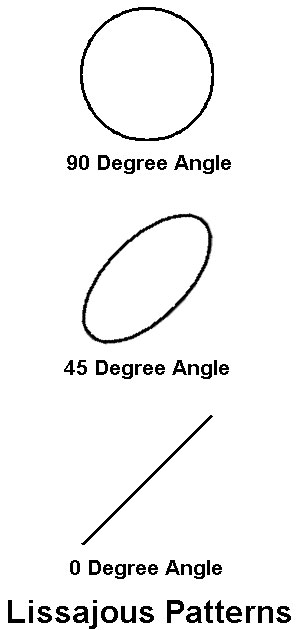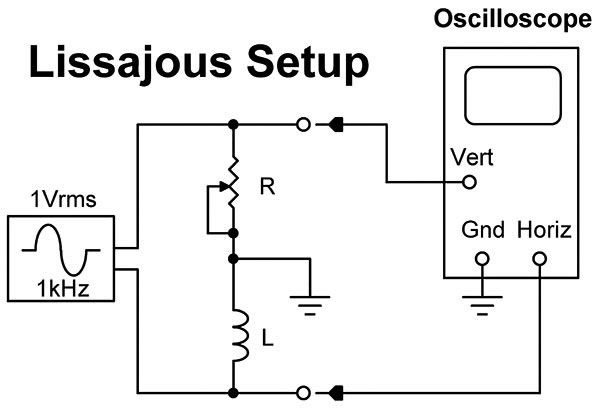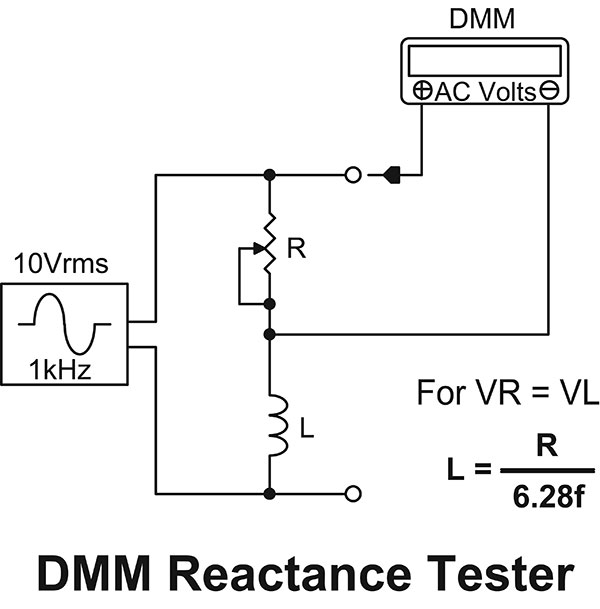With TJ Byers
Does Anybody Know What Inductance It Is?
Question:
I’m thinking of connecting a potentiometer in series with an inductor, then injecting a sine wave of a known frequency. Now, if I use an oscilloscope to observe the waveform across the resistor on channel A and the inductor on channel B and adjust the pot until the two are 45 degrees out of phase, would the value of the resistor be equal to the inductance?
— KJ4UO
Answer:
Actually, it will equal the inductive reactance (XL) of the inductor — not its inductance. Like capacitors, the inductor changes AC resistance as the frequency varies. The higher the frequency, the higher the inductive reactance. Now if you insert a resistor in series with the inductor and vary the frequency to the point where the phase shift is 45 degrees, R will equal XL. Conversely, if you keep the frequency fixed and vary the resistance until the phase shift is 45 degrees, again R will equal XL. To find the inductance value, you need to run the numbers through the formula L = R / 2πf. Most test instruments measure inductive reactance at 1 kHz, but 60 Hz will work for chokes of 50 mH and larger.
You can use your oscilloscope arrangement to determine the 45-degree point, but it’s hard to eyeball that exact angle by comparing channel A to channel B. A better solution would be to compare the two signals using Lissajous patterns.

In this arrangement, one signal is placed on the vertical input and the other on the horizontal input, as shown below. A Lissajous pattern of 45 degrees is halfway between a straight line and a circle.

Don’t have an oscilloscope? You can still measure inductive (or capacitive) reactance using a DMM on the AC range, as shown below. Adjust the pot until the voltage across the pot and inductor are equal. Plug the values into the equation — and, vióla!





Comments